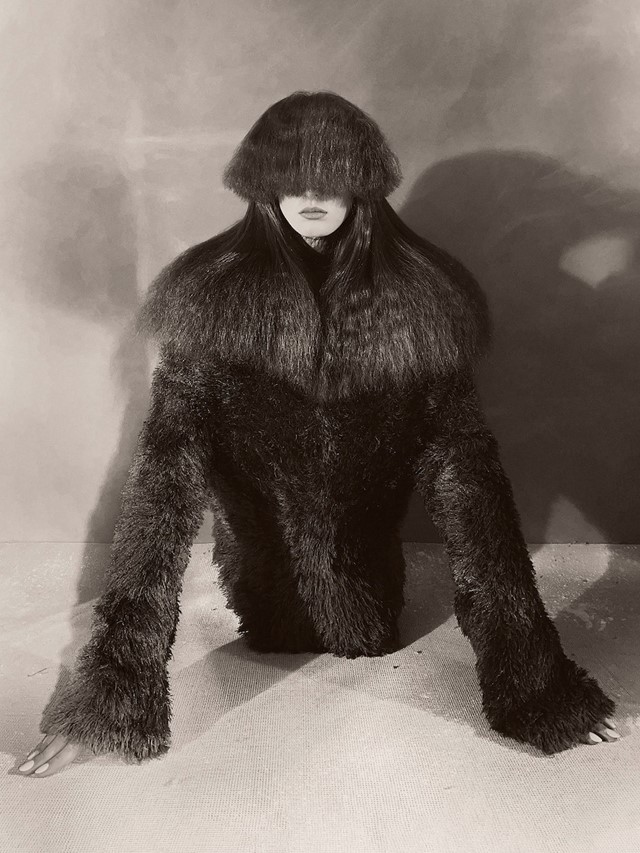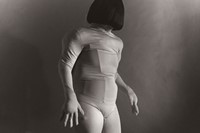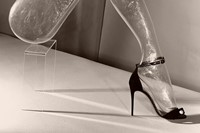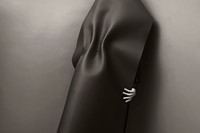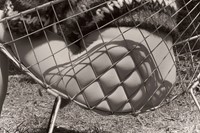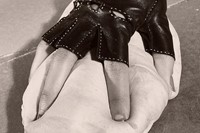As a new exhibition of his photography opens in Amsterdam, Kooiker talks about his unsettling, sepia-hued black-and-white photographs, shooting on iPhone, and his “almost fetishistic“ obsession with the body
Paul Kooiker isn’t interested in conventionally beautiful fashion photography. “The realistic, perfect colour image is not my cup of tea,” the celebrated Dutch photographer says over Zoom from his studio in Amsterdam, adding with a wry smile, “I also find it a little bit boring.” Over the past three decades, Kooiker has carefully built his own distinctive visual universe – one where body parts roam free from their owners, cinematic beauty is tinged with the unsettling, and everyday objects are twisted by narratives of fetish, surrealism and sculptural composition. As an exhibition of his fashion imagery prepares to open at Foam Amsterdam, the artist says of his singular practice: “I really cannot be a different photographer than I am.”
Though Fashion isn’t Kooiker’s first showcase at Foam – a 2006 show entitled Paradise Twenty-One surveyed a decade of his work – it is, however, the first time the artist is presenting a blend of personal works and fashion photography together as one. Alongside shoots for magazines like Luncheon and Beauty Papers, the curation includes imagery from his ambitious AnOther Magazine Autumn/Winter 2020 cover story with Kim Kardashian and Michèle Lamy, which was shot during lockdown on opposite sides of the world. “It was special because I controlled everything but I wasn’t there,” the photographer remembers of the logistically challenging shoot. “That was new for me – you have to be creative in moments like that.”
Working mainly in a sepia-hued black and white, Kooiker’s photography is defined by an eerie sense of timelessness, where a given photo could easily have been taken either yesterday or 50 years ago – bar the giveaways of a well-known face or recognisable fashion item. “Often you might get a little lost when you see my images,” the artist says. “You may think, ‘Is this the 20s, 70s, 80s, 90s? When was this made?’ The idea of timelessness is very important to me, especially as fashion itself is so up to date, so new. In a way, my work is almost in opposition to the fashion world.”
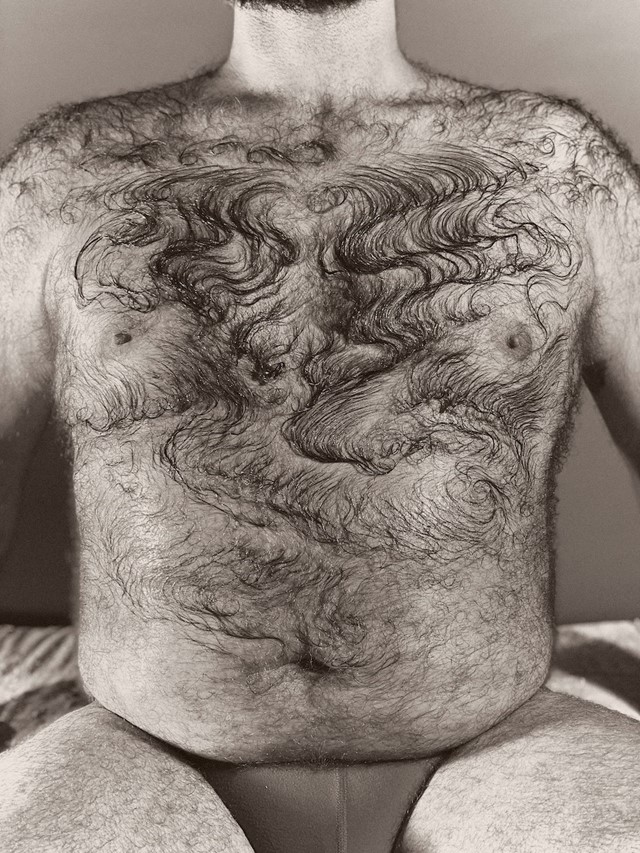
Surprisingly, given the soft analogue-quality of Kooiker’s imagery, every one of the images in the exhibition was shot on an iPhone – a medium Kooiker favours but doesn’t like to make a song and dance about. “What I like about photography is when it’s not perfect, so I always love to work with cameras that are not especially professional,” he explains. “But I never made a thing of it.” What’s more obvious in his work is an interest in cinema and art movements like surrealism and art brut, though while similarities with Man Ray, Hans Bellmer, or even the horrors of Alfred Hitchcock could easily be gleaned from looking at his photos, the artist states that his work simply reveals an insight into his mind; “how I look at things, my family and life itself.”
In this timeless space he has created, Kooiker loves to play with states of ease and unease. Materials that some people might find pleasing and others grotesque – scratchy hair, sticky rubber, and metal digging into soft flesh – are everywhere, as is an obsession with the body’s extremities; hands, feet, and hair. “I’m not so focused on beautiful faces,” he says. “I like it when body parts have their own life and their own story. When I made the edit for the show, 20 images were about hair, 20 of them were about shoes and maybe 15 or about hands. And of course, when you repeat [these themes] it almost becomes like fetishism in a way. It almost just happens.”
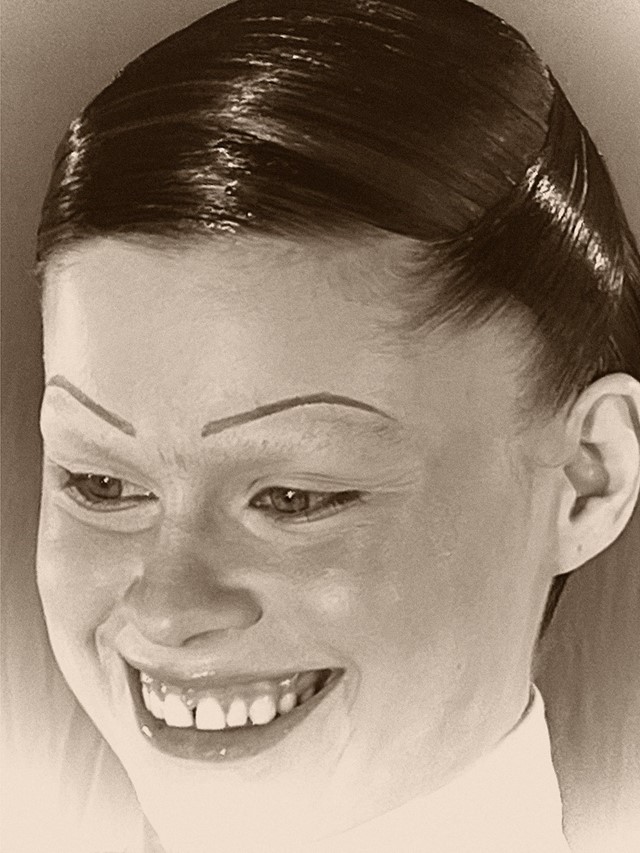
In many ways, Kooiker treats the body like a work of art. He prefers to hone in on sculptural shapes rather than people’s faces, and often taps into an unnerving doll-like uncanny. “Sometimes you don’t know if it’s a puppet or if it’s a real person, sometimes you don’t know if it’s a man or woman,” he says. “A conflict from this kind of misunderstanding is important to me.” Though the artist is aware this abstracted approach could be perceived as objectifying, he insists his work venerates the body rather than degrading it. “In a strange way, you do kind of make an object,” he admits. “But I don’t want to objectify people – I just want to play with the body as a sculpture.”
Above all else, it seems Kooiker wants to create a world of ambiguity and tension – a place where the viewer can’t help but step in and bring their own feelings to the work. It’s for this reason that, as the show opens to the public, the artist’s desire isn’t for attendees to feel a specific way about his photos, but simply that they linger long enough to imagine stories around the scenes he has created. “For me, it is very important that people stay in the space for a long time,” he says. “It’s not about whether they like it, if they think it’s good or bad, but that they really look at it and think, ‘What’s happening?’ So that’s my purpose: stay as long as possible.”
Fashion by Paul Kooiker is on show at Foam in Amsterdam until 12 February 2023.
